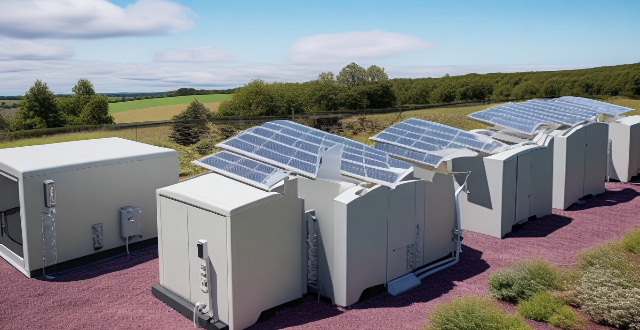A distributed energy system (DES) is a decentralized approach to power generation and distribution that utilizes renewable energy sources, energy storage devices, and smart grid technologies. The system works by generating electricity locally from renewable sources, storing excess energy for later use, and distributing power efficiently within a local area. This setup enhances efficiency, reliability, and sustainability while potentially reducing costs. DESs offer flexibility and adaptability to changing energy needs and technological advancements, positioning them as a crucial element in the future of energy infrastructure.

How does a Distributed Energy System Work?
A distributed energy system (DES) is an innovative approach to power generation and distribution that involves producing electricity closer to where it is consumed. This system typically includes a mix of renewable energy sources, energy storage devices, and smart grid technologies. Let's delve into the workings of a DES:
Key Components of a Distributed Energy System
- Renewable Energy Sources: These include solar panels, wind turbines, micro-hydro systems, and other sources that generate electricity from natural processes.
- Energy Storage Devices: Batteries, flow batteries, or other storage solutions that store excess energy for later use.
- Smart Grid Technologies: Advanced metering infrastructure, communication networks, and control systems that enable two-way power flow and real-time monitoring.
The Working Process of a Distributed Energy System
1. Generation: Renewable energy sources within the DES generate electricity based on available resources, such as sunlight for solar panels or wind for turbines.
2. Storage: Excess energy not immediately needed is stored in energy storage devices for future use, ensuring a continuous supply even when generation is low.
3. Distribution: Instead of sending all generated electricity through long transmission lines to a central grid, the DES distributes power locally, reducing transmission losses and improving efficiency.
4. Load Management: Smart grid technologies manage the load by adjusting consumption patterns based on real-time data, optimizing the use of local energy resources.
5. Interconnection with the Central Grid: In cases where local generation and storage cannot meet demand, the DES can draw additional power from the central grid or feed excess energy back into it.
6. Monitoring and Control: Advanced monitoring systems track energy production, consumption, and storage levels, allowing for fine-tuned control over the entire system.
Benefits of a Distributed Energy System
- Increased Efficiency: Less energy wastage due to shorter transmission distances.
- Enhanced Reliability: Localized generation means fewer widespread outages during grid failures.
- Environmental Sustainability: Reduced carbon footprint through the use of renewable energy sources.
- Cost Savings: Potential reduction in electricity bills as consumers generate their own power.
- Flexibility: Ability to adapt to changing energy needs and technological advancements.
In conclusion, a distributed energy system represents a significant shift towards decentralized power generation, promoting sustainability and resilience in our energy infrastructure. As technology continues to evolve, we can expect DESs to play an increasingly vital role in shaping the future of energy.